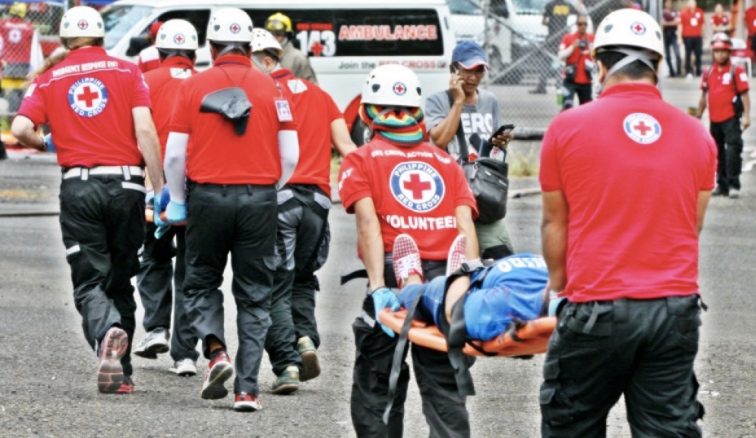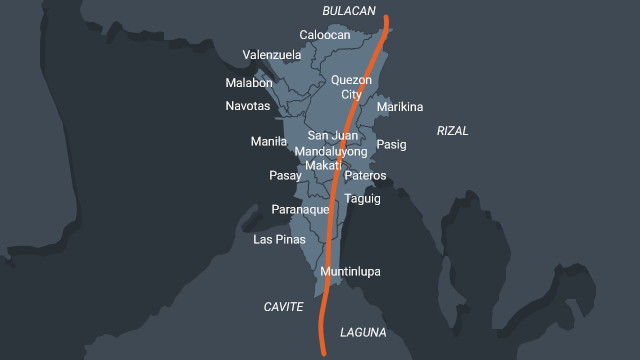SUMMARY
This is AI generated summarization, which may have errors. For context, always refer to the full article.

MANILA, Philippines – Rubb Halls, ambulances, emergency field hospitals, rescue trucks, pay loaders, water tankers, generators, and thousands of doctors, emergency medical technicians (EMTs), surgeons, trained first aiders, and Red Cross 143 volunteers—the Philippine Red Cross (PRC) has mobilized its entire system should the “Big One” happen.
The “Big One” refers to the magnitude 7.2 earthquake that could hit Metro Manila if the West Valley Fault moves. It is the worst-case scenario, as explained by Philippine Institute of Volcanology and Seismology (Phivolcs). (READ: What dangers await when the West Valley Fault moves?)
The West Valley Fault, which traverses Metro Manila through Quezon City, Marikina, Makati, Pasig, Taguig, Muntinlupa, Bulacan, Laguna, and Cavite, as well as the nearby Rizal province, is ripe for movement, according to the Phivolcs.
The West Valley Fault moves roughly every 400 years, the last of which happened in 1658, or 359 years ago. According to the Metropolitan Manila Development Authority (MMDA), should the magnitude 7.2 earthquake hit Metro Manila, it could cause 34,000 deaths and 114,000 injuries due to collapsed buildings.
PRC, with its trained 143 volunteers is fine-tuning its current response strategies to prepare for the “Big One.”

At the end of March, PRC will conduct an earthquake simulation involving PRC chapters in cities that lie near the West Valley Fault. The simulation, where PRC will apply its formula of “volunteers + logistics + information technology,” also aims to help the organization determine other areas where the PRC can maximize its volunteers and logistics.
“We are prepositioning all our resources – logistics like ambulances and rescue trucks, and volunteers such as doctors and trained first aiders – in case of a mass casualty incident that could result from the big earthquake,” said PRC Chairman Richard Gordon.
The PRC also has fire trucks and Humvees in its emergency fleet, as well as equipment that are necessary for surviving the first few days of the aftermath of the disaster, such as generators, satellite phones, portable comfort rooms, water bladders, and tents that can be used as temporary shelters.
Since hospitals would surely be packed after the disasters, the PRC has Emergency Field Hospitals (EFH) that can cater to those who could no longer be accommodated in hospitals. PRC’s EFH has a maximum bed capacity of 100. The EFH can also be expanded for maternal and surgical procedures.
The PRC is reminding the public to be informed about what to do before, during, and after an earthquake. To help equip the public with life-saving skills, the PRC created the Hazard App and the First Aid PH app, both available for free at the App Store and Google Play Store.
As residents living in the West Valley Fault line are getting ready for the “Big One,” survivors of the recent magnitude 6.7 Surigao earthquake are still experiencing aftershocks. Over 140 aftershocks have been recorded to date. – Rappler.com
Add a comment
How does this make you feel?
There are no comments yet. Add your comment to start the conversation.